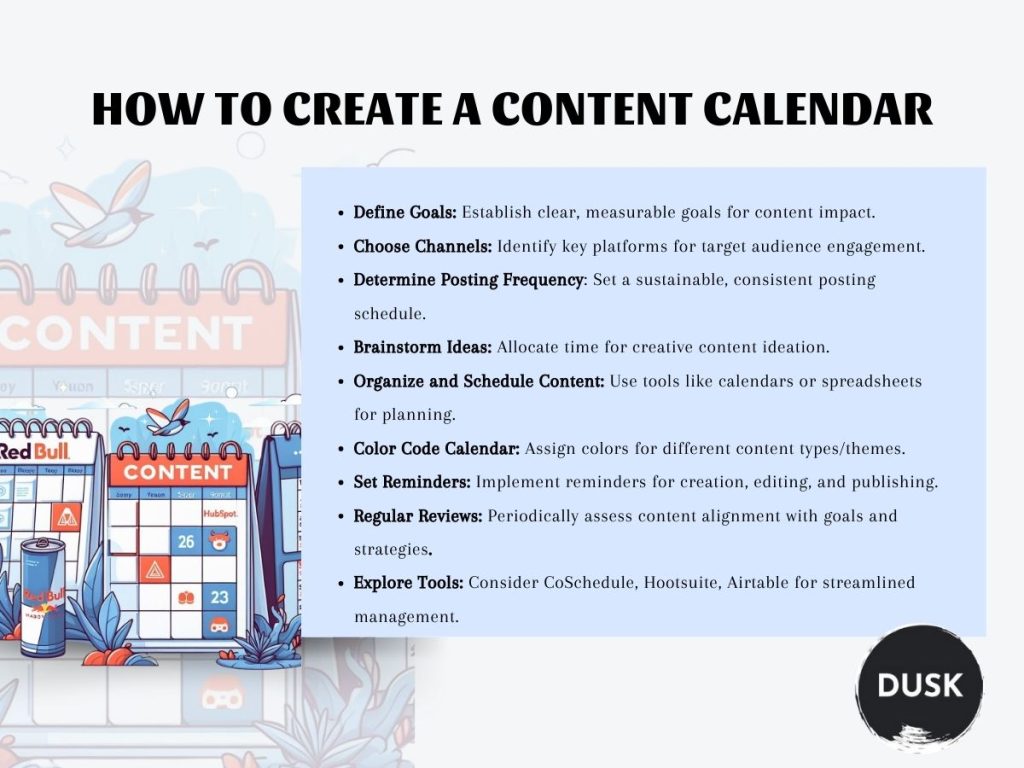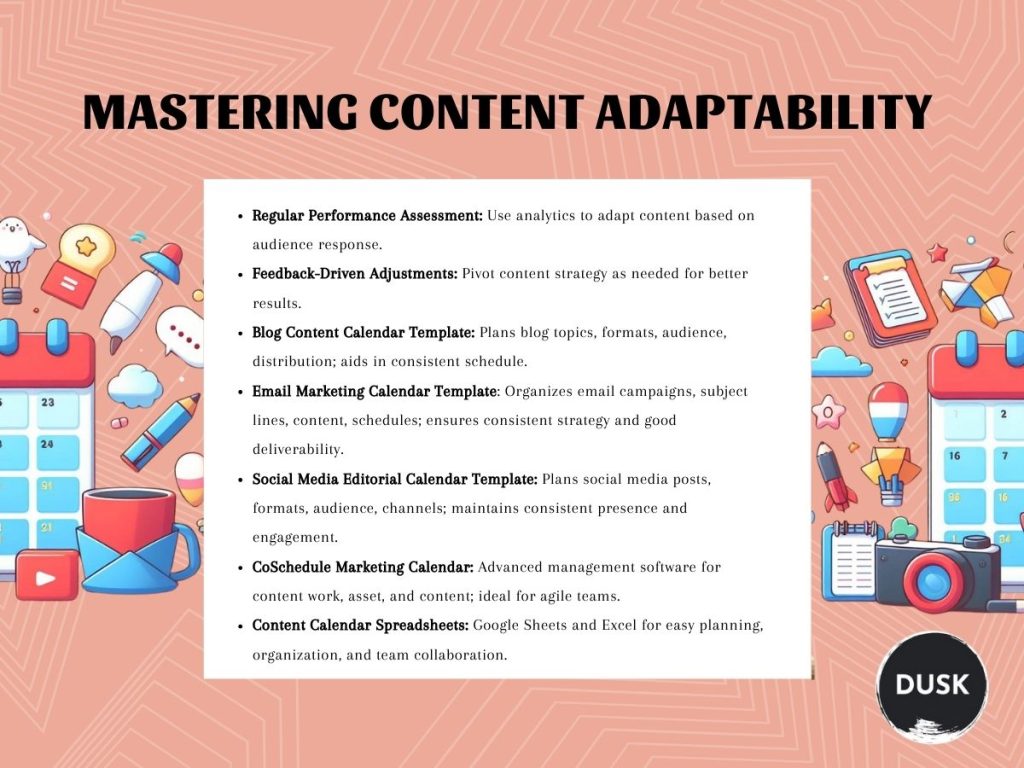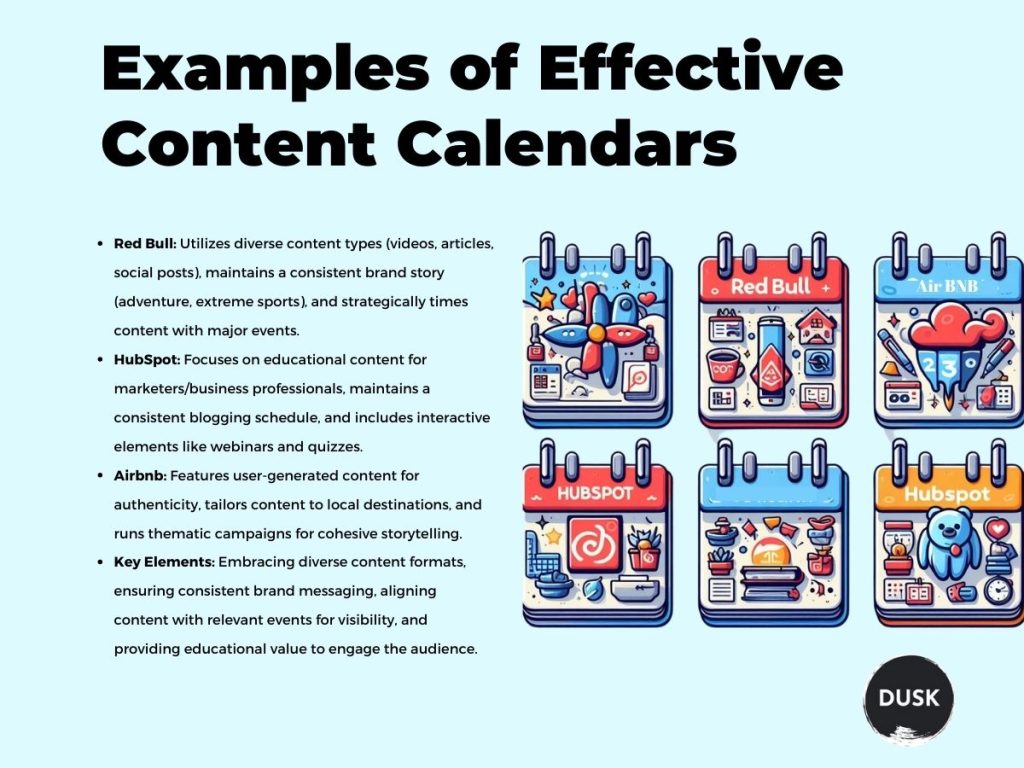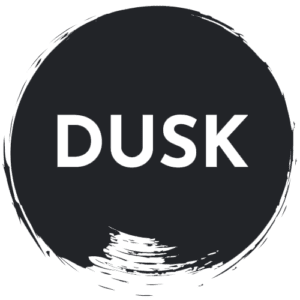In the ever-evolving landscape of digital content, maintaining a consistent and strategic approach is key to capturing and retaining your audience’s attention. A well-crafted content calendar serves as the backbone of this approach, helping you organise, plan, and execute your content strategy seamlessly.
Whether you’re a blogger, a marketer, or a business owner, a well-structured content calendar can help you stay consistent, plan ahead, and align your content with your goals.
In this blog, we will explore tips and best practices for creating a content calendar. including defining your goals, choosing your channels, and maintaining a consistent publishing schedule. We will also provide examples and tools to help you get started.
Why You Need a Content Calendar
A content calendar is a crucial tool for managing and organizing your content creation and publishing process. It helps ensure consistent and strategic content delivery to engage audiences and meet your marketing goals. Here are some benefits of using a content calendar:
- Saves time and widens team bandwidth: A content calendar saves time by staying organized, especially when managing multiple accounts. It also gives you more bandwidth to track and test different strategies to see what resonates with your audience.
- Maintains a consistent posting schedule: A content calendar helps you establish a routine for content creation, ensuring that your content is published regularly and on time.
- Increases transparency and collaboration: Content production usually involves multiple teams and stakeholders. A content calendar improves communication and collaboration among team members, ensuring everyone is on the same page.
- Tracks performance and ROI: With a content calendar, you can monitor the performance of your content and calculate the return on investment (ROI) for your content marketing efforts.
- Helps plan and execute campaigns: A content calendar allows you to plan and execute campaigns across different channels, ensuring a cohesive message and consistent brand voice.
How to Create a Content Calendar
Creating a content calendar involves several steps to ensure that your content is well-organized and effectively managed. Here’s a detailed step-by-step guide to help you create a content calendar:

Define Your Goals
Begin by establishing clear and measurable goals for your content. Understand the purpose of each piece – whether it’s to drive website traffic, increase engagement on social media, or showcase your expertise in a particular field. Your goals will serve as the guiding principles for the content you create and share.
Choose Your Channels
Different platforms cater to diverse audiences, and it’s crucial to tailor your content accordingly. Identify the channels where your target audience is most active and engage with them effectively. Whether it’s a blog, social media platforms, or email newsletters, align your content with the strengths of each channel to maximize its impact.
Determine Your Posting Frequency
Consistency is key in the digital realm. Define a posting frequency that is sustainable and aligns with your goals. Whether you choose to post daily, weekly, or bi-weekly, maintaining a predictable schedule helps build audience expectations and keeps your brand at the forefront of their minds.
Brainstorm Content Ideas
Creativity is the heart of compelling content. Set aside dedicated time to brainstorm content ideas that resonate with your audience. Consider trends, industry news, and customer feedback. A diverse mix of content types, such as blog posts, infographics, and videos, can keep your strategy fresh and engaging.
Organize and Schedule Your Content
Use a calendar tool or spreadsheet to organize and schedule your content. This step ensures that your content aligns with your goals, channels, and posting frequency. Map out your content in advance, allowing for strategic planning and preventing last-minute scrambles. Tools like Google Calendar, Trello, or specialized content management systems can simplify this process. Below are some of the tips for staying organized:
- Color Code Your Calendar: Assign distinct colors to different content types or themes for easy visual organization.
- Set Reminders: Use reminders to prompt content creation, editing, and publishing tasks.
- Regularly Review and Adjust: Schedule periodic reviews to ensure your content calendar aligns with your evolving goals and strategies.
Tools and Resources for Content Calendar Management
Explore various tools designed to streamline content calendar management. Popular options include:
- CoSchedule: Integrates with popular platforms and provides a collaborative environment for teams.
- Hootsuite: Ideal for social media scheduling and management.
- Airtable: A versatile tool that combines the features of a spreadsheet and database for comprehensive content planning.
Mastering Content Adaptability: Leveraging Templates and Tools for Effective Calendar Management
Flexibility is key in the ever-changing digital landscape. Regularly assess your content performance through analytics, and be prepared to adapt your calendar based on insights.
If a particular type of content resonates more with your audience, consider adjusting your strategy to capitalize on that success.
Stay open to feedback and be willing to pivot your content plan as needed to achieve optimal results. Some content calendar templates and their key features include:

- Blog Content Calendar Template: This template is designed to plan and organize blog content, including topics, formats, target audience, and distribution channels. It helps in producing better content and maintaining a consistent schedule.
- Email Marketing Calendar Template: This template is used to plan and organize email marketing campaigns, including subject lines, content, and sending schedules. It helps in maintaining a consistent email marketing strategy and ensuring good deliverability rates.
- Social Media Editorial Calendar Template: This template is used to plan and organize social media content, including post ideas, formats, target audience, and distribution channels. It helps maintain a consistent social media presence and ensures regular engagement with the audience.
- Content Calendar Software: CoSchedule Marketing Calendar is an example of content calendar software that offers advanced content work management, asset management, and content management tools. It is suitable for visually managing workflows and is especially suited for agile teams.
- Content Calendar Spreadsheets: Google Sheets and Excel are popular tools for creating content calendars. They allow for easy planning, organization, and collaboration, making it a simple way to plan upcoming content.
Examples of Effective Content Calendars: Unraveling the Secrets of Success
A well-structured content calendar is the backbone of any successful content strategy, and examining case studies of brands that have mastered this art provides valuable insights. Let’s delve into a couple of examples of effective content calendars, analyzing the key elements that contribute to their success.

Red Bull: Energizing Content Across Platforms
Red Bull’s success lies in its ability to create a narrative that resonates with its target audience. By diversifying content types and ensuring consistency in messaging, Red Bull keeps its audience engaged across various platforms. The strategic timing of content releases, especially during major events, allows the brand to ride the wave of trending conversations, maximizing visibility and impact. Below are the company content calendar highlights:
- Diverse Content Types: Red Bull’s content calendar spans a variety of formats, including videos, articles, and social media posts.
- Consistent Brand Story: The content consistently reflects Red Bull’s brand identity, emphasizing adventure, extreme sports, and a high-energy lifestyle.
- Strategic Timing: The brand strategically aligns content releases with major events, creating buzz and capitalizing on trending topics.
HubSpot: Educating and Engaging with Precision
HubSpot’s success is rooted in its commitment to providing valuable, educational content. By maintaining a consistent blogging schedule and offering a mix of content formats, the brand keeps its audience informed and engaged. The inclusion of interactive elements adds a layer of dynamism, encouraging audience participation and fostering a sense of community. Below are the companies content calendar Highlights:
- Educational Content: HubSpot’s content calendar prioritizes educational materials, catering to its audience of marketers and business professionals.
- Consistent Blogging Schedule: The brand maintains a regular blogging schedule, ensuring a steady flow of valuable content for its audience.
- Interactive Content: HubSpot incorporates interactive elements such as webinars, quizzes, and downloadable resources to enhance engagement.
Airbnb: Creating Community-Centric Stories
Airbnb’s effective content calendar revolves around the power of community and storytelling. By prominently featuring user-generated content, the brand not only taps into the authenticity of real experiences but also fosters a sense of belonging within its community. The localized approach and thematic campaigns add depth to the storytelling, creating a rich and immersive brand narrative. Below are the companies content calendar Highlights:
- User-Generated Content (UGC): Airbnb’s content calendar prominently features UGC, showcasing the experiences of its community members.
- Localized Content: The brand tailors its content to highlight specific destinations, making it relevant and relatable to a global audience.
- Thematic Campaigns: Airbnb occasionally runs thematic campaigns, tying multiple pieces of content together for a cohesive storytelling experience.
Key Takeaways:
- Diversity in Content Types: Successful content calendars embrace a variety of formats to cater to different audience preferences.
- Consistent Brand Story: The content should consistently reflect and reinforce the brand’s identity and messaging.
- Strategic Timing: Aligning content releases with relevant events and trends maximizes visibility and impact.
- Educational Value: Providing valuable, educational content strengthens the brand’s authority and keeps the audience engaged.
Crafting Compelling Content for Your Roofing Business Blog
Mastering the art of content calendar management is pivotal for navigating the dynamic landscape of digital content successfully. By defining clear goals, choosing the right channels, and maintaining a consistent posting schedule, you can leverage the benefits of a well-organized content calendar.
Now, let’s shift our focus to a more specific domain – the roofing business. In our next blog, ‘Crafting Compelling Content for Your Roofing Business Blog,’ we’ll delve into the unique challenges and opportunities within this niche. From understanding your target audience to developing content that resonates, we’ll explore practical tips and strategies to elevate your roofing business’s online presence.






